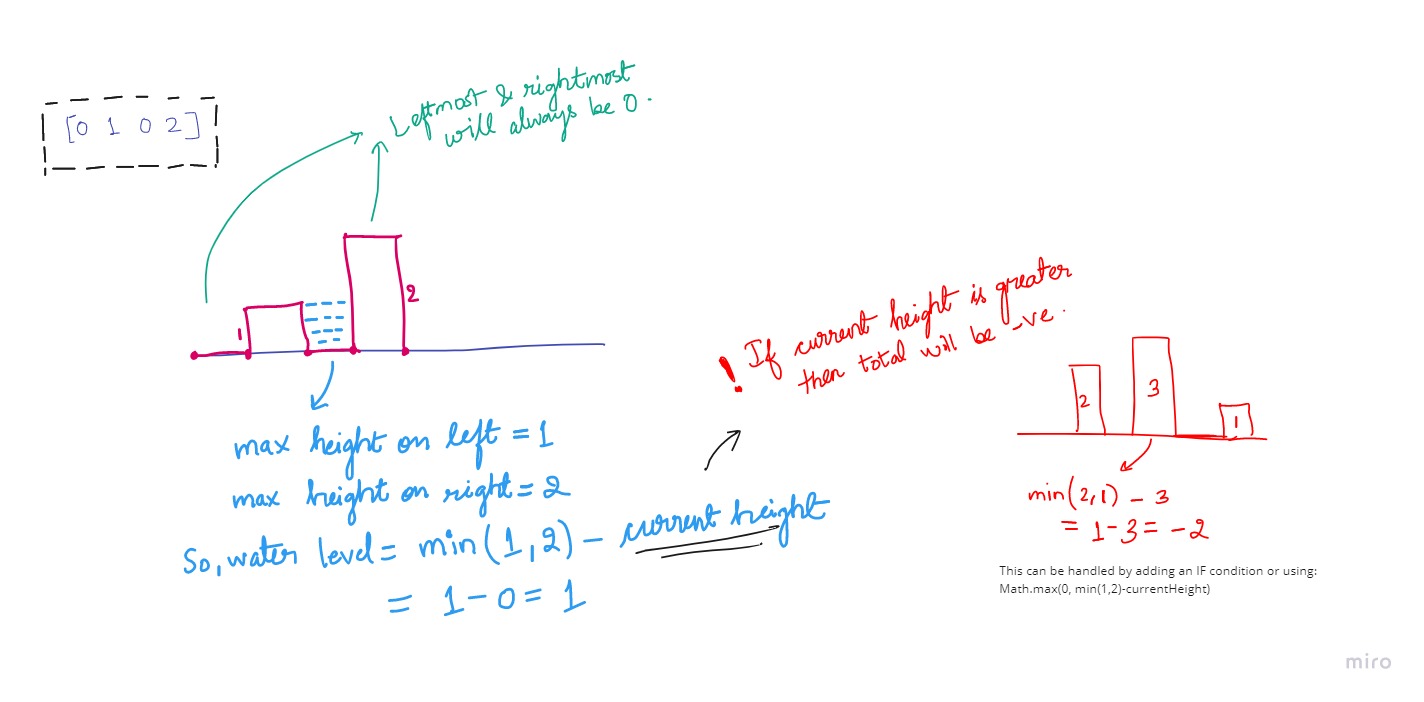This question is part of NeetCode150 series.
Problem Description
Given n non-negative integers representing an elevation map where the width of each bar is 1, compute how much water it can trap after raining. Trapping Rain Water
Solution

We would need to think of how we can calculate the water which can be trapped at each block. Let’s say that the max height on the left side of current block is maxL and max height on the right side of the current block is maxR, then the water which can be trapped will be: min(maxL, maxR) - currentHeight. This will be true for most cases, but this will be negative if the currentHeight is greater than than both maxL and maxR. In that case, the water trapped will be 0. Also, for the left most and right most block, there will be no water trapped. We can maintain the maxL and maxR for any block using prefix array.
1
2
3
4
5
6
7
8
9
10
11
12
13
14
15
16
17
18
19
20
21
22
23
24
25
26
27
28
29
30
31
class Solution {
public int trap(int[] height) {
int n = height.length;
int[] pfl = new int[n]; //prefix array to track max before i index
int[] pfr = new int[n]; //prefix array to track max after i index
pfl[0] = 0;
int currentMax = 0;
for(int i=1; i<n; i++){
if(height[i-1] > currentMax) currentMax = height[i-1];
pfl[i] = Math.max(pfl[i-1], currentMax);
}
pfr[n-1] = 0;
currentMax=0;
for(int i=n-2; i>=0; i--){
if(height[i+1] > currentMax) currentMax = height[i+1];
pfr[i] = Math.max(pfr[i+1], currentMax);
}
int total=0;
for(int i=1; i<n-1; i++){
total += Math.max(0, Math.min(pfl[i],pfr[i])-height[i]); //If the currentHeight is more than the max on left and right both, take 0.
}
return total;
}
}
